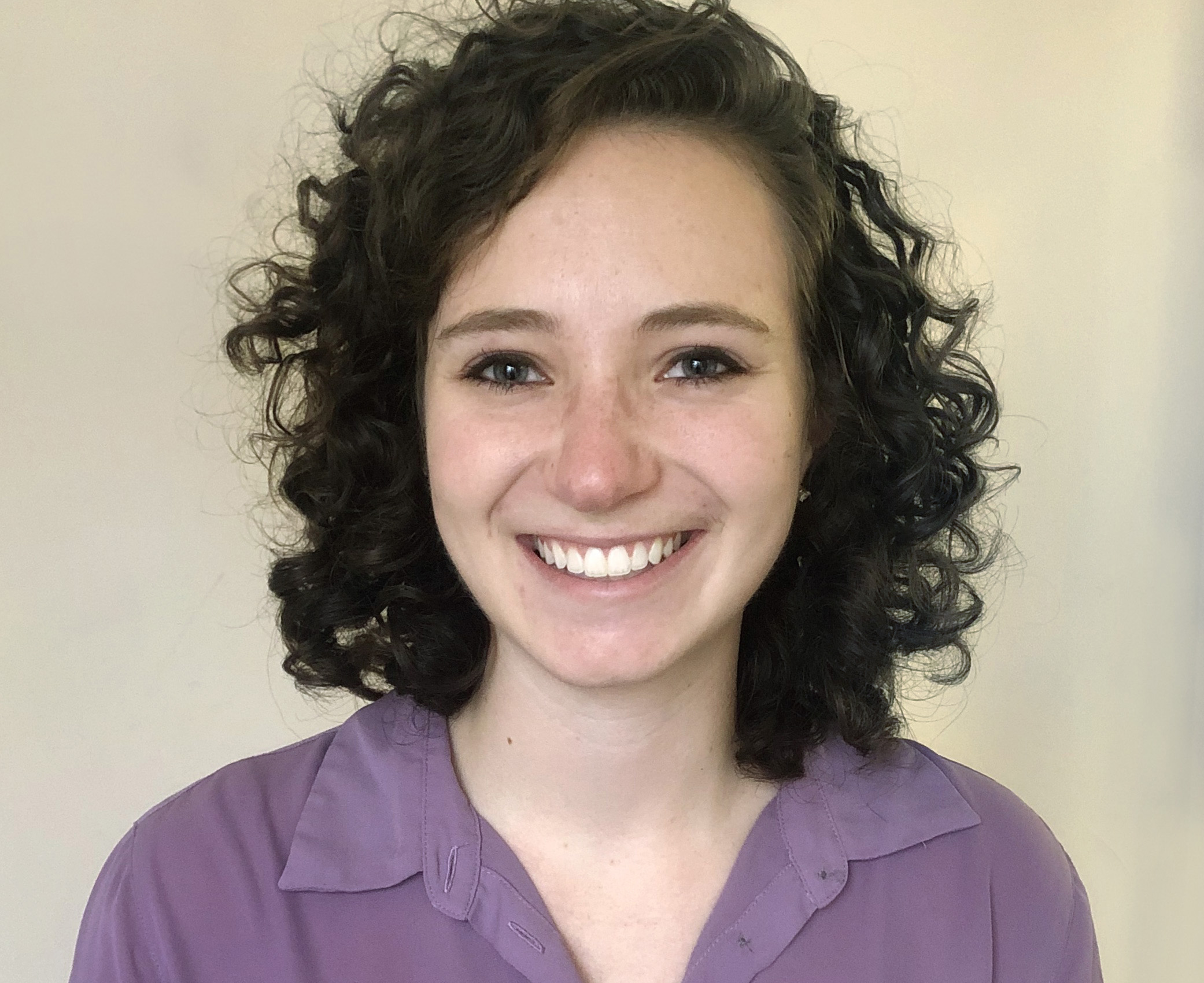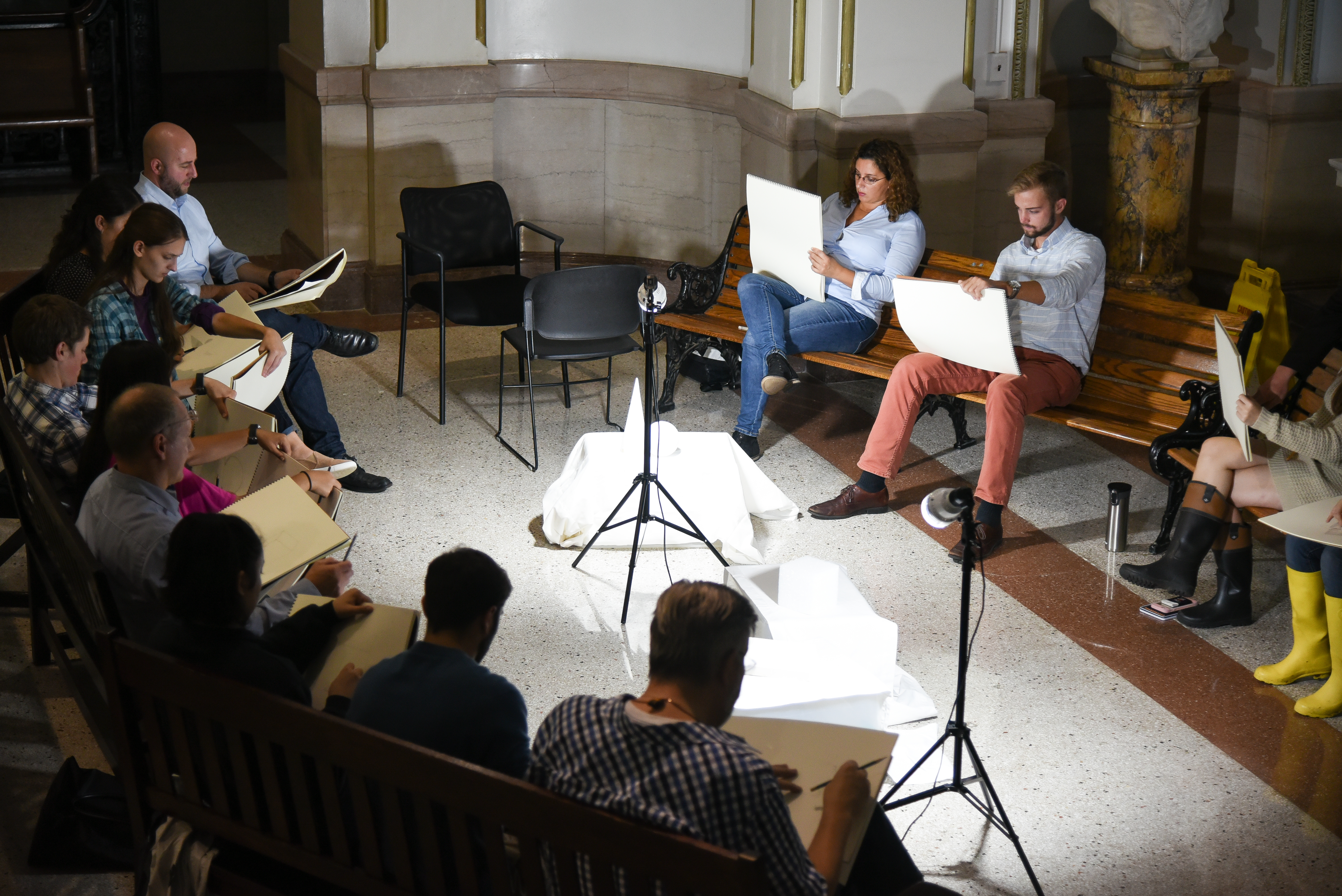One September evening, about a dozen students huddled around portrait artist Igor Babailov as he sketched the lobby of McMahon Hall at The Catholic University of America, making it look easy as he sat with a drawing pad and a pencil facing the entrance of the building.
He sketched the doors, the walls, the chandeliers, and other details, as he explained to the students how to identify where the horizon should be in relationship to the artist. After the students carefully watched him, it was their turn to try a drawing of their own, with Babailov giving them input along the way.
This evening was part of a two-week masterclass for undergraduate students and a few professors, organized through the Ciocca Center for Principled Entrepreneurship in Catholic University’s Busch School of Business and Economics. Babailov, the instructor, has painted portraits of Pope St. John Paul II, Pope Benedict XVI, and Pope Francis, among other world leaders.

Andreas Widmer, the director of the Ciocca Center, said he believed the drawing course, which is titled “The Da Vinci Course,” had something important to offer business students. He hoped it would give students the opportunity to “get a taste of the beauty of manual good work.”
Widmer noted that about 40 percent of the parents of students who attend the Busch School are small-business owners. Just as with art, these small businesses, or “maker companies,” as Widmer referred to them, require creativity.
“When we make, we imitate God in His creative power,” said Widmer.
In addition, Widmer hoped to teach his students about morality and virtue through parallels with the creative process. He said one of the most difficult things to explain is relativism versus absolute truth, but creating art demonstrates how truth can exist and also be interpreted differently by different people.
For example, one of their first classes involved drawing shapes that looked different depending on where the student was sitting.
“That cone in the middle is one and it is true,” explained Widmer. “…Everyone drawing it calls their drawing true, but they all look different. Your perception of truth is not the same as truth.”

Widmer noted that at the beginning of the class, the students were scared to draw in front of such a renowned artist, especially because many of them had never drawn seriously before. But by attempting something and sticking with it for two hours every day of the class, he said they would be able to see how they can improve as a result of hard work. This is one way of learning about virtue, which follows a similar process.
While many students’ parents sent them to college to get a job, Widmer said it is more important to him to help them develop character and virtue.
“I teach not making a living (but) making a life,” he said.
This masterclass is just one of the initiatives the Ciocca Center is hosting in order to promote creativity, virtue and social responsibility as a part of their students’ education. In 2017, the center launched a partnership with the Initiative for a Competitive Inner City to provide training and mentorship for more than 100 small businesses located in economically distressed areas of Washington, in an effort to provide job growth.
On October 4, the center partnered with Catholic Creatives to host a hackathon, where young professionals had the opportunity to discuss innovative solutions for problems facing the Church and to collaborate on a design challenge to come up with a creative vocations poster.

Babailov believes in the mission of his masterclass because “what we do in this class is nothing new,” he said, noting that for centuries, every formal education included a drawing class, until computers took over much of the work that required drawing.
“We started to forget who we are, that we are the ones who created them (computers),” said Babailov. “We surrender our own potential as human beings. It (drawing) develops your way of thinking; your vision. It helps you not to just look at the world around us but to see it in all the complexities.”
Noting how children all instinctively love to draw, he believes everyone can learn to draw if they just understand a few basic rules, which DiVinci called the “sciences.” During the two-week class, it is these “sciences” that he hoped to impart upon the students.
“In the past, it wasn’t just a thing for artists…everyone could draw,” he said. “It is a God-given gift we all have, but we don’t use it.”
Luke Burgis, the entrepreneur-in-residence at the Ciocca Center, said one of the main things that struck him about Babailov’s instruction was his emphasis on the importance of art. During one of the classes, Babailov crumpled up a piece of paper and told them that the way it was crumpled right then was unique in the history of the world, and if they didn’t sketch it then, it would be lost.
Widmer invited students who had a diversity of majors to the course, but who all were connected to the Ciocca Center for Entrepreneurship in some way.
“I’m more analytical, but it is fun to sit down and look at things in a different way…giving my brain time to flesh out ideas rather than being focused on quantitative work,” said Michael Corado, a senior finance major.
When English major Susanna Torres got an e-mail inviting her to participate in the course, she said she felt “it would be stupid to pass up this opportunity.”
“I’ve always enjoyed art as a hobby, but I wanted to do better and learn the real techniques,” she said. “This is learning with the best.”










